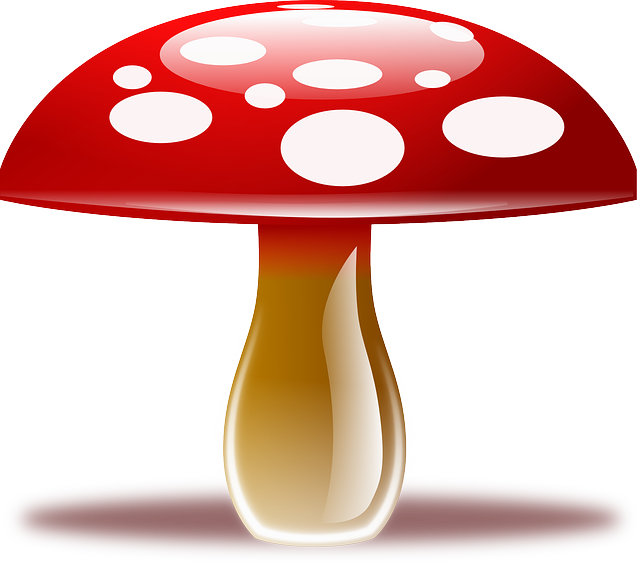The Amanita Muscaria Edible, known colloquially as the fly agaric, is a psychoactive mushroom celebrated for its historical and cultural significance. It has been used in shamanistic rituals and is woven into various mythologies worldwide, including Finnish and Russian traditions where it's linked to Christmas. This edible mushroom contains active compounds like ibotenic acid and muscimol, which may offer therapeutic benefits such as antidepressant, anxiolytic, and analgesic effects, though their use should be approached with caution due to the potent nature of these substances. User experiences report a range of psychedelic effects including vivid hallucinations and introspective insights, emphasizing the importance of a safe, controlled, and legal setting for consumption. As research continues, Amanita Muscaria Edible's potential as a tool for mental health and self-discovery becomes increasingly evident, advocating for informed and responsible use.
Exploring the multifaceted impact of Amanita Muscaria, this article delves into its historical usage, pharmacological properties, and cultural significance. From its psychoactive effects to potential therapeutic benefits, we examine the extensive influence of this iconic mushroom. Safety in consumption and legal considerations are paramount, as personal accounts reveal profound experiences. Join us on a journey through the mind-altering effects of Amanita Muscaria Edible, an enigmatic substance steeped in folklore and scientific intrigue.
Historical Context of Amanita Muscaria Use and Folklore
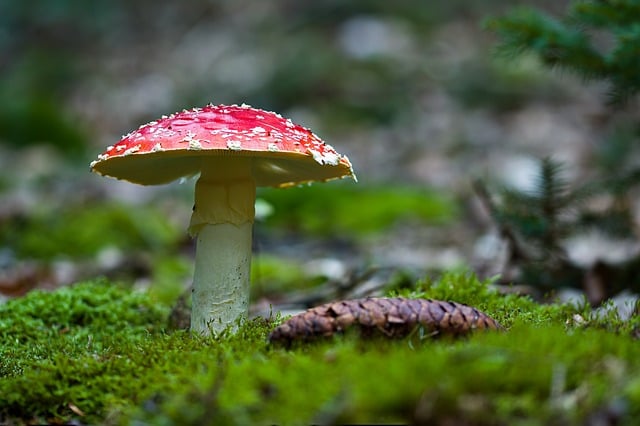
The Amanita Muscaria mushroom, with its iconic red and white cap, has a history steeped in folklore and cultural significance that spans across continents and centuries. This fungal species, often referred to as the “Fly Agaric,” has been a subject of fascination and use for its psychoactive properties since time immemorial. Evidence of Amanita Muscaria’s consumption dates back to prehistoric times, with its presence depicted in rock art and found in ancient burial sites across Siberia, indicating its role in shamanic rituals. The mushroom features prominently in European folklore, where it has been associated with magical transformations and the crossing of realms between the natural world and that of mythology. In Finnish and Russian cultures, the Amanita Muscaria is often depicted alongside Santa Claus or Grandfather Frost, symbolizing magic and wisdom. The use of this mushroom has been a part of various cultural traditions, with accounts suggesting it was consumed by individuals seeking spiritual insights, heightened creativity, or as a means to enhance communal bonding during gatherings. Historically, the Amanita Muscaria’s edible status within certain communities has been intertwined with cautionary tales and warnings about its potent effects, underscoring the importance of discerning between this specific mushroom and other potentially harmful species. The cultural narrative surrounding Amanita Muscaria is a tapestry of myth, history, and empirical use, reflecting humanity’s enduring intrigue with mind-altering substances.
Chemical Composition and Pharmacological Properties of Amanita Muscaria Edible

The Amanita Muscaria, commonly known as the fly agaric, is a species of psychoactive mushroom with a rich historical background in various cultures’ folklore and rituals. Its distinctive red-and-white cap, often adorned with patterns of spots, dots, or lines, belies the complex chemical composition that underpins its mind-altering properties. The edible form of Amanita Muscaria contains several psychoactive compounds, primarily ibotenic acid and muscimol, which are responsible for its psychedelic effects when ingested. Ibotenic acid is initially present in the mushroom but degrades into muscimol upon drying or being exposed to heat; muscimol being the primary agent that influences neurotransmitter glutamate activity and produces the hallucinogenic experience. These compounds interact with serotonin receptors in the brain, leading to changes in perception, mood, and cognition. The pharmacological properties of Amanita Muscaria are not fully understood, as its effects can vary widely among individuals due to differences in tolerance, set, and setting. Additionally, the mushroom’s concentration of these active ingredients can fluctuate based on environmental factors, such as the age of the mushroom and the conditions under which it was grown, further complicating its predictable impact. Research into the pharmacokinetics and pharmacodynamics of Amanita Muscaria continues to shed light on its mechanisms of action, with ongoing studies aiming to clarify its potential therapeutic applications as well as the risks associated with its use.
Psychoactive Effects and Experiences with Amanita Muscaria Consumption
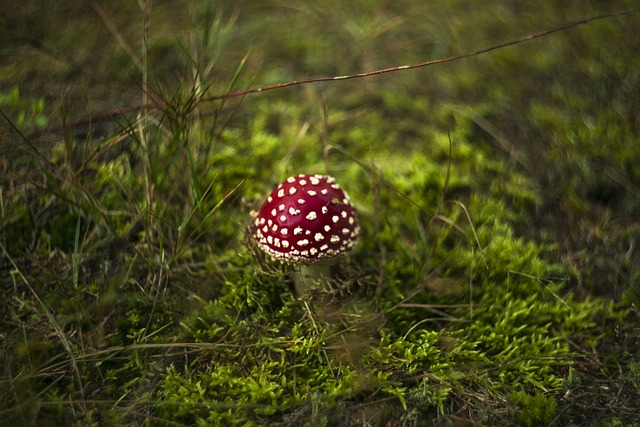
The Amanita Muscaria, commonly known as the fly agaric, is a psychoactive mushroom with a rich history of use in various cultural contexts. Its consumption has been associated with profound alterations in perception and consciousness, which can manifest in vivid visual experiences, altered sensory processing, and an enhanced sense of empathy among users. The psychoactive compounds found within the Amanita Muscaria, namely ibotenic acid and muscimol, are responsible for these effects. Consumption typically leads to a euphoric state followed by introspection and, in some cases, profound spiritual experiences. Users may report feelings of unity with their surroundings or transcendental states of awareness. It’s important to approach the use of Amanita Muscaria with caution, as dosage and set and setting play significant roles in the nature and intensity of the experience. The effects can be unpredictable, and the mushroom is potent even in small quantities, making careful preparation and a safe environment critical for a positive outcome. Additionally, it’s crucial to understand that the legal status of Amanita Muscaria varies by region, and its consumption should comply with local laws and regulations. The experiences resulting from Amanita Muscaria consumption are deeply personal and can range from spiritually enlightening to overwhelming, highlighting the importance of a respectful and informed approach when engaging with this psychoactive substance.
Cultural Significance and Ritualistic Uses Across Different Societies
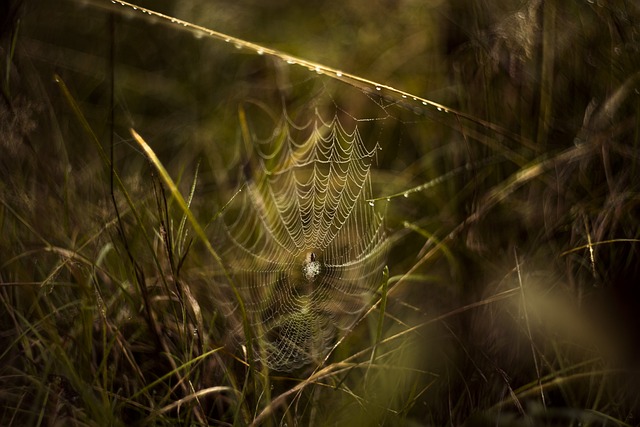
The Amanita Muscaria Edible, a mushroom widely recognized for its distinctive red and white cap, holds a significant place in various cultural rituals across different societies. Historically, it has been revered in Siberian shamanistic practices, where it serves as a spiritual conduit between the human and divine realms. The shamans consume this psychoactive mushroom during ceremonies to achieve an altered state of consciousness, facilitating their role as intermediaries for their communities. Beyond Siberia, similar rituals have been observed in other cultures, where Amanita Muscaria Edible has been integrated into spiritual and healing traditions, often associated with deities and mythological narratives that imbue the mushroom with profound symbolism.
The ritualistic use of Amanita Muscaria Edible extends to Finland and other parts of Europe, where it is woven into folklore and mythology, particularly in relation to Santa Claus or the Christmas spirit. Here, it represents a bridge between the material and immaterial worlds, echoing its role in shamanistic practices. In these contexts, the mushroom’s mind-altering effects are not merely for escapism but are deeply integrated into cultural narratives and collective consciousness as a symbol of transformation and transcendence. The significance of Amanita Muscaria Edible in these diverse cultural settings underscores its historical and spiritual importance beyond its physical attributes, highlighting the mushroom’s multifaceted role in human societies throughout history.
Potential Therapeutic Applications of Amanita Muscaria
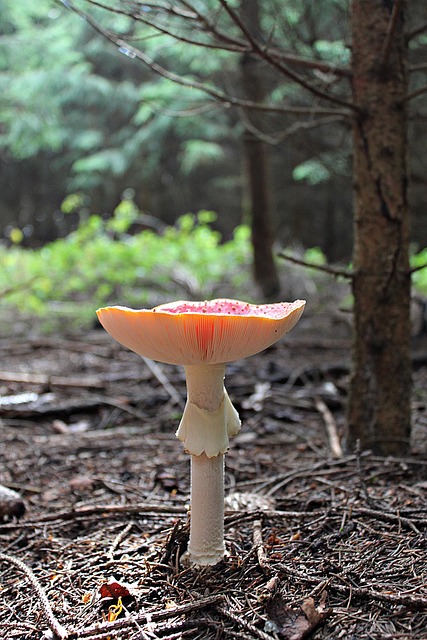
The Amanita Muscaria, commonly known as the fly agaric, has long been a subject of intrigue due to its psychoactive properties. This mushroom, with its distinctive red and white cap, has a storied history in various cultures, often associated with folklore and spiritual rituals. Beyond its mythological connotations, contemporary research is exploring the potential therapeutic applications of Amanita Muscaria, particularly its edible form when prepared correctly to mitigate toxic components. Studies have suggested that this mushroom may offer benefits in the realms of mental health and pain management. Preliminary findings indicate that it could act as an antidepressant, anxiolytic, and analgesic, providing a natural alternative for individuals seeking relief from psychiatric conditions such as depression and anxiety, as well as chronic pain. The active compounds found in Amanita Muscaria, including ibotenic acid and muscimol, are thought to modulate neurotransmitter systems within the brain, potentially leading to improved mood and reduced sensations of pain. However, it is imperative to approach these findings with caution; the use of Amanita Muscaria for therapeutic purposes should only be pursued under the guidance of a qualified healthcare provider due to its potent effects and potential for adverse reactions. As research progresses, the understanding of how this mushroom can be safely utilized in therapeutic settings continues to evolve, offering hope for those exploring alternatives beyond conventional medicine.
Safety Precautions, Dosage, and Legal Considerations
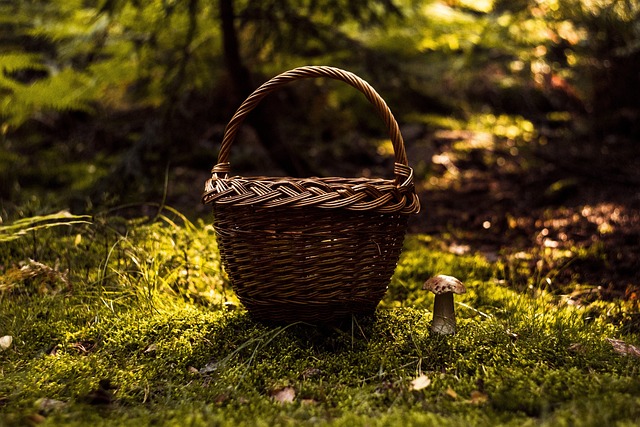
When exploring the effects of mind-altering substances like Amanita Muscaria, a well-known psychoactive mushroom, safety must be paramount. It is imperative to approach such experiences with caution and respect for the substance’s potency. Safety precautions include a thorough understanding of the environment in which the experience will take place, ensuring it is a safe and controlled setting. Additionally, one must consider personal health factors and contraindications, as these can significantly affect the experience and its aftermath. Amanita Muscaria should be ingested with careful consideration of dosage, as overconsumption can lead to adverse effects. The optimal dosage varies depending on individual biochemistry and tolerance; thus, it is advisable to start with a minimal effective dose and wait for its full effect before consuming more.
Legal considerations are also critical when discussing Amanita Muscaria, as the legal status of this substance can vary by region and country. In some areas, it may be legal to possess and consume for personal use, while in others, it is subject to strict regulations or remains illegal. It is the responsibility of the individual to familiarize themselves with the local laws pertaining to psychoactive substances before considering any form of consumption. Legal implications can range from minor fines to severe legal consequences, and thus adherence to the law should be a top priority. Those who choose to engage with Amanita Muscaria should do so with knowledge of its legal standing in their jurisdiction and with respect for the regulations in place to ensure public safety.
Personal Accounts: Stories from Those Who Have Experienced Amanita Muscaria's Effects
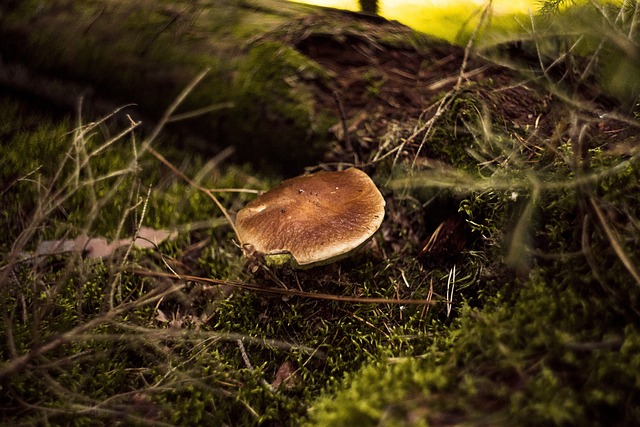
Throughout history, the Amanita Muscaria mushroom has been shrouded in mystery and intrigue, often associated with fairy tales and folklore. Today, personal accounts from those who have experienced its effects provide valuable insights into this enigmatic psychedelic substance. Many individuals report a profound transformation in their perception and consciousness after consuming Amanita Muscaria, which is commonly known as the ‘Fly Agaric.’ These experiences vary widely among users, with descriptions ranging from vivid visual hallucinations to introspective journeys that can be both enlightening and challenging.
In one account, a user described their experience as an immersion into a kaleidoscope of colors and patterns. The environment around them seemed to come alive with new details previously unnoticed, and the boundaries between reality and imagination blurred. Another individual recounted an experience that led to profound personal insights, stating that it facilitated a deeper understanding of their emotions and thought processes. The introspective nature of the effects of Amanita Muscaria has been consistently reported by users, highlighting its potential as a tool for self-discovery under controlled conditions and with proper guidance. These narratives underscore the unique impact of Amanita Muscaria, emphasizing the importance of responsible exploration and the role of personal context in shaping the mind-altering effects of this edible psychedelic.
